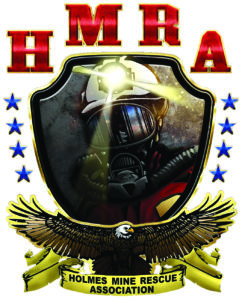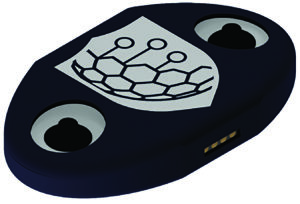 Organizers are looking forward to hosting back-to-back national and international mine rescue contests
Organizers are looking forward to hosting back-to-back national and international mine rescue contests
by steve fiscor, editor-in-chief
Working in conjunction with Mine Safety and Health Administration (MSHA), the Holmes Mine Rescue Association (HMRA) will host the first National Mine Rescue contest using combined metal and coal rules at the Central Bank Center in Lexington, Kentucky, on August 8. This is the first major mine rescue contest to take place since the onset of COVID-19. “The National Mine Rescue Contest takes place every two years and the nationals were canceled twice since 2019,” HMRA President Jeff Kravitz said. “Normally, we alternate between coal and metal, but this time we are doing both simultaneously.”
Last year, Kravitz and the HMRA led an effort to combine the coal and metals mine rescue contest rules. They gathered input from a diverse group of mine rescue professionals, but they found the process to be a little more difficult than they expected. “The rules that govern the bench test and first aid were easier to combine than the rules pertaining to the mine rescue contest, so we kept the basic coal and metals core for the mine rescue contest,” Kravitz said. “We will have both coal and metals mine rescue teams participating on the same kind of field in Lexington with different problems. For bench and first aid, they will work the same problems.”
The HMRA was created in 2013 as part of the Joseph A. Holmes Association. Kravitz retired from MSHA in 2017 after 43 years with the Bureau of Mines, MESA, and MSHA, and currently leads the efforts. “For the mine rescue contest rules, we asembled a fairly large group to determine whether and how the rules for both metals and coal could be combined,” Kravitz said. “All the rules are now developed by HMRA. Previously, the rules were developed by MSHA with input from industry. We rely on both coal and metal mining experts in mine rescue from all over the country. We now have much richer set of rules for mine rescue contests.” Readers can learn more at www.holmessafety.org
MSHA will still judge the contest and the states usually provide officials as well. “We have a more cooperative arrangement than we have had in the past,” Kravitz said.
As many as 100 teams are expected to turn out and the mix will likely be 60:40 coal to metals. The Lexington location will have an obvious appeal to coal operators, but they are also expecting a high level of participation from the metal mining side, Kravitz explained.
The Kentucky Mining Institute held a mine rescue contest recently, which many viewed as a precursor for the nationals. They had 30 teams participate and they used the combined rules for the first time. It worked out pretty good, Kravitz explained, but there were a few areas that needed to be more polished.
Back-to-back Contests
This year is kind of special for mine rescue teams because the U.S. is hosting the International Mine Rescue Contest (IMRC) during September at the MSHA Academy in Beckley. “We have been working on this since 2019 too and it was delayed twice,” Kravitz said. “We have about a dozen countries, and we are expecting about 700 people including support staff and the International Mine Rescue Body (IMRB).”
Another added twist is that the IMRC will take place September 11-16, 2002, which is the same timeframe as the Bluefield Coal Show. Hotel rooms in southern West Virginia will be scarce during the second week of September. “We didn’t have much choice with the timing,” Kravitz said. The official hotel for the IMRC is the Glade Springs Resort in Daniels, West Virginia.
Seven U.S. teams from both metals and coal will compete in the IMRC. “We will have four or five Canadian teams and two teams from Colombia,” Kravitz said. “We usually have strong participation from Australia, and we’re also expecting teams from India, Poland, Finland, Zambia and other countries.”
New Monitoring Technology
Equipment and technology also play a large role in mine rescue contests. Draeger and Biomarine will have the latest apparatuses. IWT Wireless will demonstrate its communication systems. Several companies are developing new monitoring systems for mine rescue team members.
“All of this will be on display at IMRC,” Kravitz said. “Sentinel Occupation Safety attended our annual conference in Clearwater, Florida, last year and provided some insight into its health monitoring technology.”
Sentinel’s Safeguard system can be used to monitor a team member’s vitals, such as blood pressure and heart rate, and provide real-time feedback. “The Canadians displayed similar technology when they hosted IMRC,” Kravitz said. “As the captain was approaching a dire situation, you could see his heart rate increasing. This system can monitor the core body temperatures, heart rates and most of your vitals.”
Knowing these vitals in real time is important. Once the captain’s heart rate spikes, the common-sense approach would be to remove him from the area and substitute another team member. “If you’re fighting a fire and you can see the miners’ core temperatures are going up, you definitely want to pull them out and get them some liquids,” Kravitz said. “We encounter this situation frequently and now we have the technology that could let us know what’s happening with that person in real time.”

Sentinel’s SafeGuard system gathers biometric data and reports the user’s condition in real time.
Sentinel Occupational Safety, which was spun out of Aptima in March 2020, was formed around its SafeGuard technology, which uses a combination of wearable sensors, analytics, and intuitive software to monitor the well-being of at-risk individuals. SafeGuard gathers biometric and environmental information, then overlays that data with context to determine whether the subject is at risk and reports the subject’s condition in real time.
Even though it’s a relatively new company, it has been working with the technology since 2014 with some very reputable organizations in the defense space, such as Lockheed Martin, the Air Force Research Laboratory, the U.S. Navy, monitoring people in confined space in real time.
“We’re focused on protecting and prolonging the lives of those at risk, and the mining sector is a clear target for us due to documented acute safety and chronic health challenges,” said Zachary Kiehl, CEO and co-founder, Sentinel Occupational Safety. “The mining and materials sector is not our only focus, however, as our technology can be deployed to a wide array of environments rife with stressors and human risk.”
The flexible, rubber SafeGuard monitoring device measures roughly 2- x 3-in. For optimal data quality, it has to have contact with skin through the use of an electrode.
SafeGuard has three components: sensors, analytics and software. “We take data from the environment and the individuals, and try to contextualize it, and that is to say: Is the person indoors or outdoors? What’s the temperature? Are they standing upright or are they lying face down? Context matters with some of these assessments,” Kiehl said. “On the intuitive software side, it could detect if there’s an incident that’s about to happen or if somebody has just had a hard fall. If you cannot effectively and intuitively convey that information to the right person at the right time, it’s all for naught. That’s really our claim to fame.”
Kiehl positions SafeGuard as sensor-agnostic platform, meaning that they can swap sensors as needed for each application. Acute hazards often differ. One application may be looking at noise exposure or heat stress, while another might be measuring methane exposure or possible electrocution. “Instead of having one vendor solution for every possible problem, we try to take this holistic approach and swap sensors out as needed,” Kiehl said. “If you have an Apple watch, you can use SafeGuard. Similarly, if you have an intrinsically-safe, noise dosimeter/gas detector and heart-rate monitor and you want to monitor people in an explosive environment, we can also do that. The system is meant to scale up and down in complexity with customized sensors based on the application.
“Using the mine’s existing communications network, we provide a streamlined method to take raw data from a host of sensors, fuse it together and layer context on top of that in real time for actionable insight,” Kiehl said. “It’s an intelligent guardian that could look after as any as 500 people.”




